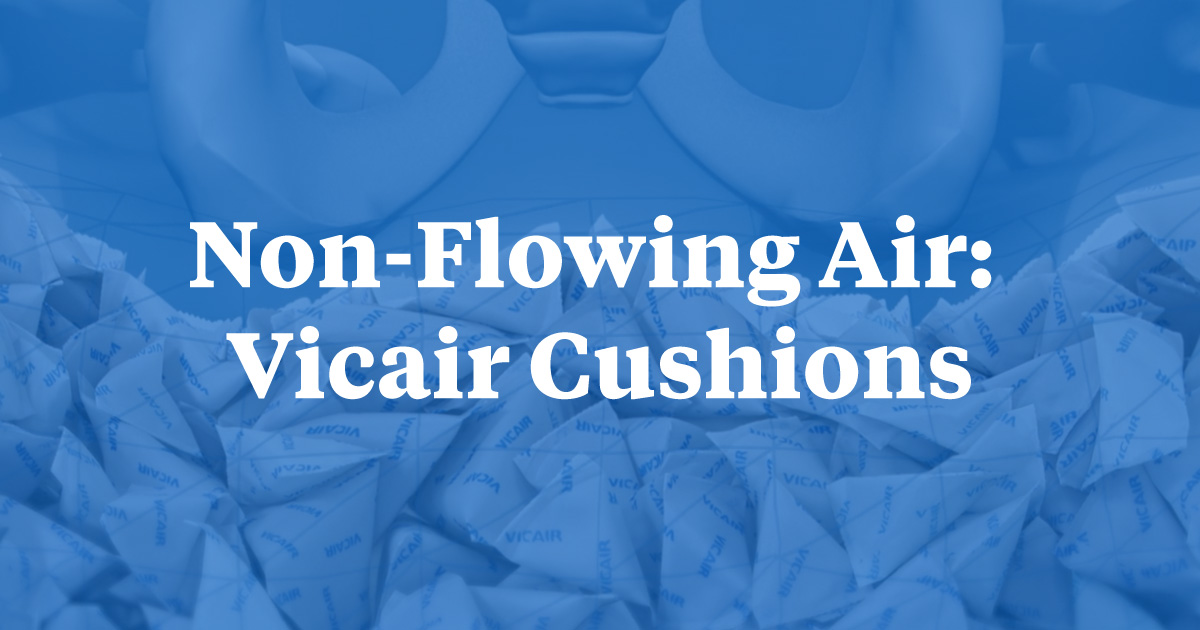Looking for more information on seating and positioning? Check out our digital page all about seating and positioning products here.This is part 8 of our series on seating and positioning. See part 1, part 2, part 3, part 4, part 5, part 6, and part 7.
In keeping with our discussion on Permobil offering innovative technologies, today we’re going to look at Vicair cushions.
Vicair Technology: SmartCells
Vicair cushions are compartmentalized cushions that are filled with SmartCells.
 These are small tetrahedron shaped cells filled with air. There are hundreds of cells strategically placed in multiple compartments, depending on the model, which give the cushions their shape. When an individual sits on a Vicair cushion, the SmartCells will move together, shift, and conform to the unique contours. The benefit of the tetrahedron shape is as they shift and move to contour with the individual shape, they always end up interlocking, resulting in a stable surface. Because the air is static and enclosed in the SmartCells, there is no transfer of air throughout the cushion which also contributes to the stable surface.
These are small tetrahedron shaped cells filled with air. There are hundreds of cells strategically placed in multiple compartments, depending on the model, which give the cushions their shape. When an individual sits on a Vicair cushion, the SmartCells will move together, shift, and conform to the unique contours. The benefit of the tetrahedron shape is as they shift and move to contour with the individual shape, they always end up interlocking, resulting in a stable surface. Because the air is static and enclosed in the SmartCells, there is no transfer of air throughout the cushion which also contributes to the stable surface.
Given the multiple compartments in each cushion, there is the option to adjust the number of cells in each compartment allowing the cushion to be adapted for individual positioning needs. Considering there are hundreds of SmartCells in each cushion, a leak in one cell does not affect the function of the cushion.
There are three different models of Vicair cushions to choose from, depending on the individual seating goals:
These cushions are designed to provide skin protection, stability, and positioning.
Skin protection:There are various methods of pressure redistribution, namely offloading, immersion, and envelopment.
Stability:
Individuals with the ability to control their body position are not dependent on the seat surface for stability. But when this strength and control is compromised by disease, age, or injury, the stability of the seat surface becomes very important. When I say this I mean a seat surface that allows an individual the ability to reach and lean forward, backward, side to side and not feel unstable in their cushion. Stability in a seat surface provides an individual support, security, balance, dependability, and assurance to perform daily tasks at the highest level of independence.
How do Vicair cushions offer stability? Vicair cushions are filled with SmartCells which are tetrahedron shaped air-filled cells. This shape is known to interlock and fit well together, providing a stable surface. Once an individual sits on a Vicair cushion, the SmartCells will shift, adapt to the shape and interlock. The cushion compartments keep the SmartCells contained and are designed in such a way that they provide superior stability as well as positioning possibilities.
Positioning:
When a seat surface offers positioning, it is offering the ability to decide where and how to place the pelvis and thighs. Often, this is done through adjustability of a cushion. This adjustability to individual needs can allow for more comfort, less fatigue and greater ability to interact with the environment. It promotes good posture which decreases pain especially in the neck, shoulders and back. Proper positioning allows an individual to better perform activities of daily living such as eating and brushing hair and may decrease the risk of an individual falling out of the chair and being injured. When an individual is NOT properly positioned in their cushion it can decrease respiration, decrease digestion, increase risk for aspiration, decrease communication, decrease their visual field, result in bladder issues, pressure injuries, and increase risk for contracture development.
How does Vicair offer positioning? Vicair cushions are designed to offer positioning capabilities through the strategic placement of the compartments in each model, which are filled with adjustable SmartCells. Compartments can be raised or lowered by adding/removing SmartCells to meet individual goals.
As you can see Vicair cushions offer unique solutions to goals of skin protection, stability and positioning. Want more information on Permobil's seating solutions? Check out our digital page all about Permobil seating and positioning solutions. Join us next time in our series as we take a look at what makes the ROHO® QUADTRO SELECT® Cushion unique.




